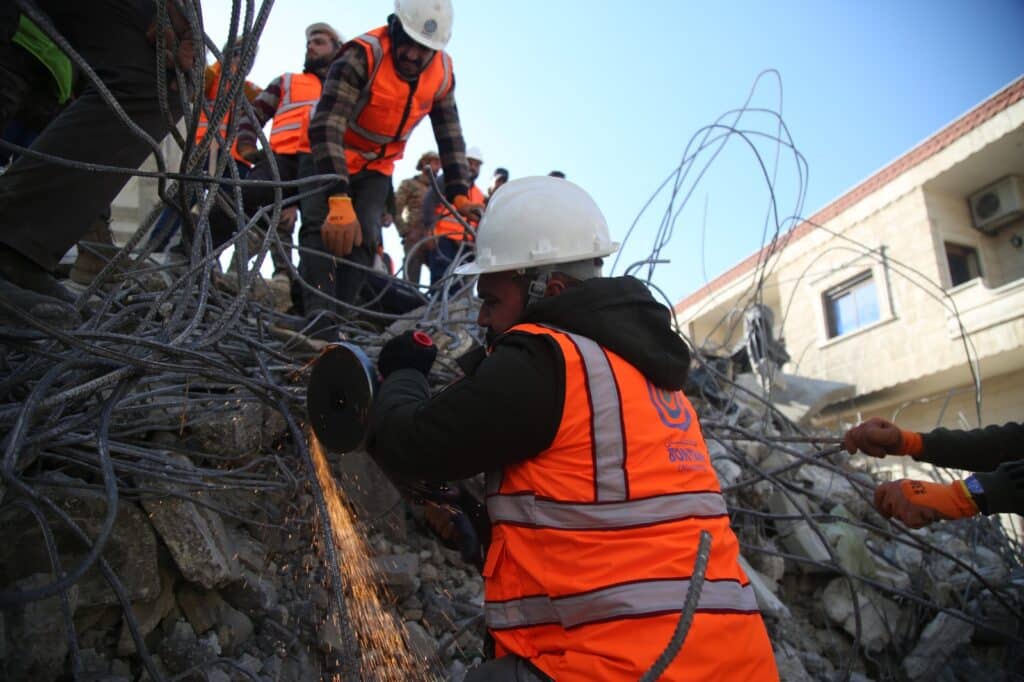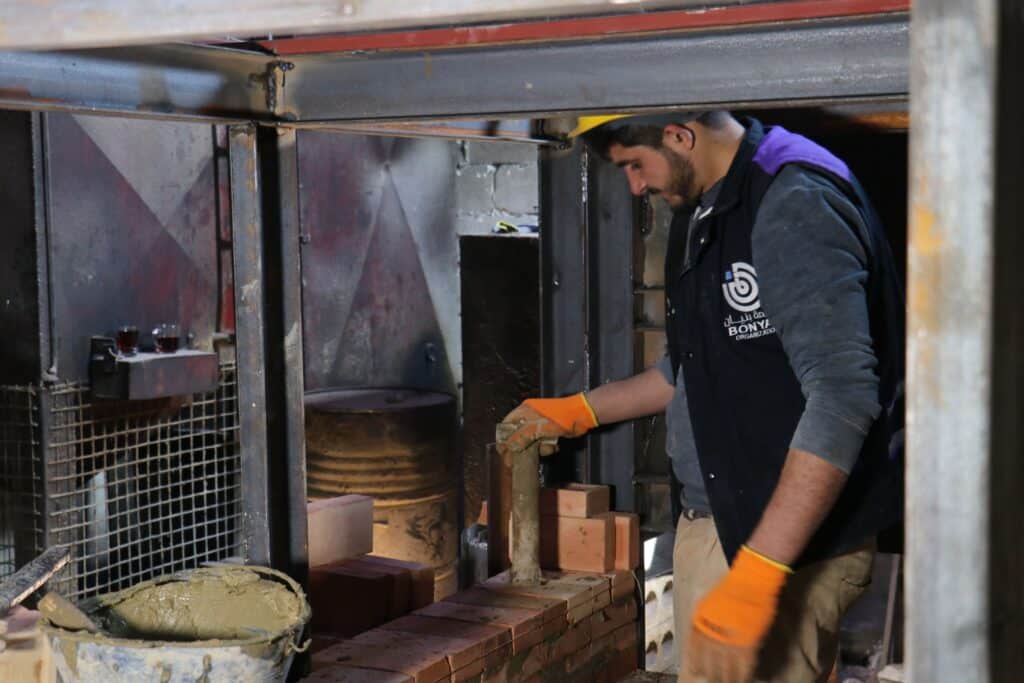Following the series of earthquakes that hit southeast Turkey and northwestern Syria on 6 February, the human, material, economic and environmental losses are immense. In this article, we discuss earthquake and disaster recovery measures that should be employed to mitigate the impacts of the damages and prevent future losses in case such a disaster occurs.
What is earthquake recovery?
Earthquake recovery includes multiple measures to ensure that your house and other business buildings are protected and can withstand earthquakes. This also includes planning ahead to secure all valuables and fixtures. In that sense, there are a number of measures that the Occupational Safety and Health Administration recommends during earthquakes. These are:
- Identify a safe place, such as under a desk or a table that is in proximity to your location.
- If the earthquake happens while you are outside, stay outside. Also, move away from tall buildings, trees, power lines, and streetlights.
- Wait in a safe place until the shaking stops.
- Keep watch of the ensuing blazes and fires.

What are the five phases of disaster recovery?
There are mainly 5 phases of disaster recovery and emergency management. Below are these phases:
- Prevention.
These are actions taken to halt the occurrence of the incident. Prevention also includes operations and surveillance.
- Mitigation.
This refers to the measures taken to prevent the emergency from happening and reduce its chance of occurrence. Mitigation steps also reduce the destructive effects of unavoidable emergencies. Such as
- Establishing building codes and zoning requirements.
- Installing shutters.
- Building barriers.
- Preparedness.
These are activities that aim at increasing the community’s ability to respond to a disaster or an emergency. These include establishing mutual aid agreements, memorandums of understanding, and providing training sessions for both response personnel and citizens.
- Response.
These include actions immediately before, after, and during the emergency. Such activities aim to save lives and alleviate economic losses.
- Recovery.
Recovery measures help bring the community back to its normal state. These measures include the restoration of the basic services and repairing the ensuing damages, whether these are physical, social, or economic.
Rebuilding Infrastructure and Institutions in Turkey and Syria
There are a number of techniques that could be implemented to rebuild the infrastructure and the institutions following the damage that happened from the back-to-back earthquakes. These include:
- One technique is called capacity design which is widely used in seismically active zones and was implemented after the series of earthquakes that happened in Italy in 2016. This technique ensures that buildings retain their resilience during earthquakes.
- Another technique is called base isolation, which is a method implemented in many seismically active regions. This method uses rubber bearings and spring systems under a building.
Rebuilding houses after the earthquake in Turkey and Syria
Following the devastating Turkey-Syria earthquake that occurred on 6 February, the Turkish government is now working on rebuilding 20,000 new homes in the affected areas and cities. According to a government official, new homes are to be rebuilt within a year.
As for the northwest Syrian side, NGOs and charity organizations have pledged to rebuild new houses for the victims.
Also, Saudi Arabia has pledged to help the victims of the earthquake both in Turkey and Syria with 3,000 new temporary buildings.

Rebuilding schools after the earthquake in Turkey and Syria
Buildings that have been destroyed in the earthquake include schools. This affected the educational process of many students whose education had been interrupted.
Rebuilding schools after the earthquake in Turkey and Syria take up the collective efforts of governments and NGOs.
Rebuilding mosques after the earthquake in Turkey and Syria
Rebuilding mosques to replace the ones that were destroyed is, no doubt, the responsibility of Muslims around the world.
Therefore, Syria and Turkey are in need of donations from Muslims around the world to help reconstruct the destroyed mosques and build new ones.
What can you do to recover from an earthquake?
There are many steps that you can usually follow to recover from an earthquake. These actions include:
- Check for any gas leaks, chemical spills, unbroken water pipes, or chemical spills.
- Keep an eye out for any media reports about where you can get emergency housing, food, first aid, shelter, clothing, and so on.
- If the power is off inside your affected house, use the frozen food first and save the canned food for later.
- Check the media for any safety tips or advice for emergencies.
- If the water is unavailable or unsafe, check another source for water, such as water heaters and melted ice cubes.
- Do not consume any water or food from open containers near shattered glasses.
Donate for rebuilding after the earthquake
Assist Bonyan Organization’s humanitarian and relief efforts to help the victims affected by the earthquakes. At Bonyan, our fundraising efforts are mainly directed at providing Syrian refugees and those internally displaced to get their basic needs, including food, water, clothing, and shelter.
Following the devastating series of back-to-back earthquakes and aftershocks, many areas in northwest Syria were left underserved and deprived of any services and facilities. Therefore, your donations will certainly help those vulnerable victims, including children and their families, to meet their basic needs.
Resources
- Earthquake Hazards.
- Steps of Emergency Management.
- Turkey begins to rebuild for 1.5 million left homeless by earthquakes.
- Saudi Arabia to build 3,000 homes as Turkey, Syria earthquake survivors left homeless.
- 1000 homes in 100 hours for displaced of Syria after quake.
- What Should You Do After an Earthquake?
- Death toll climbs above 50,000 after Turkey, Syria earthquakes.
FAQs
How many people died in Turkey and Syria earthquakes?
According to the latest figures, more than 50,000 people have died both n the Syrian and Turkish sides so far.
How long did the Kahramanmaras earthquake last?
The Kahramanmaras earthquake lasted for 80 seconds.
When was the earthquake in Turkey and Syria?
The earthquake in Turkey and Syria happened on 6 February 2023.
How many buildings collapsed in the Turkey earthquake?
The number of buildings that collapsed due to the earthquake is more than 160,000 buildings containing 520,000 apartments.
Why are there so many ruins in Turkey?
There are many ruins in Turkey due to the earthquake that occurred on 6 February 2023.
How long does it take to rebuild after an earthquake?
Rebuilding procedures following the earthquake can take up to several years.
What is the recovery process from a disaster?
The recovery process after a disaster involves maintaining or reestablishing key infrastructure and systems.
How long do aftershocks last?
Aftershocks can continue for days, weeks, months, or even years.
What happens after an earthquake?
After an earthquake, thousands of people die, and buildings collapse.
Content
- What is earthquake recovery?
- What are the five phases of disaster recovery?
- Rebuilding Infrastructure and Institutions in Turkey and Syria
- What can you do to recover from an earthquake?
- Resources
-
FAQs
- How many people died in Turkey and Syria earthquakes?
- How long did the Kahramanmaras earthquake last?
- When was the earthquake in Turkey and Syria?
- How many buildings collapsed in the Turkey earthquake?
- Why are there so many ruins in Turkey?
- How long does it take to rebuild after an earthquake?
- What is the recovery process from a disaster?
- How long do aftershocks last?
- What happens after an earthquake?



